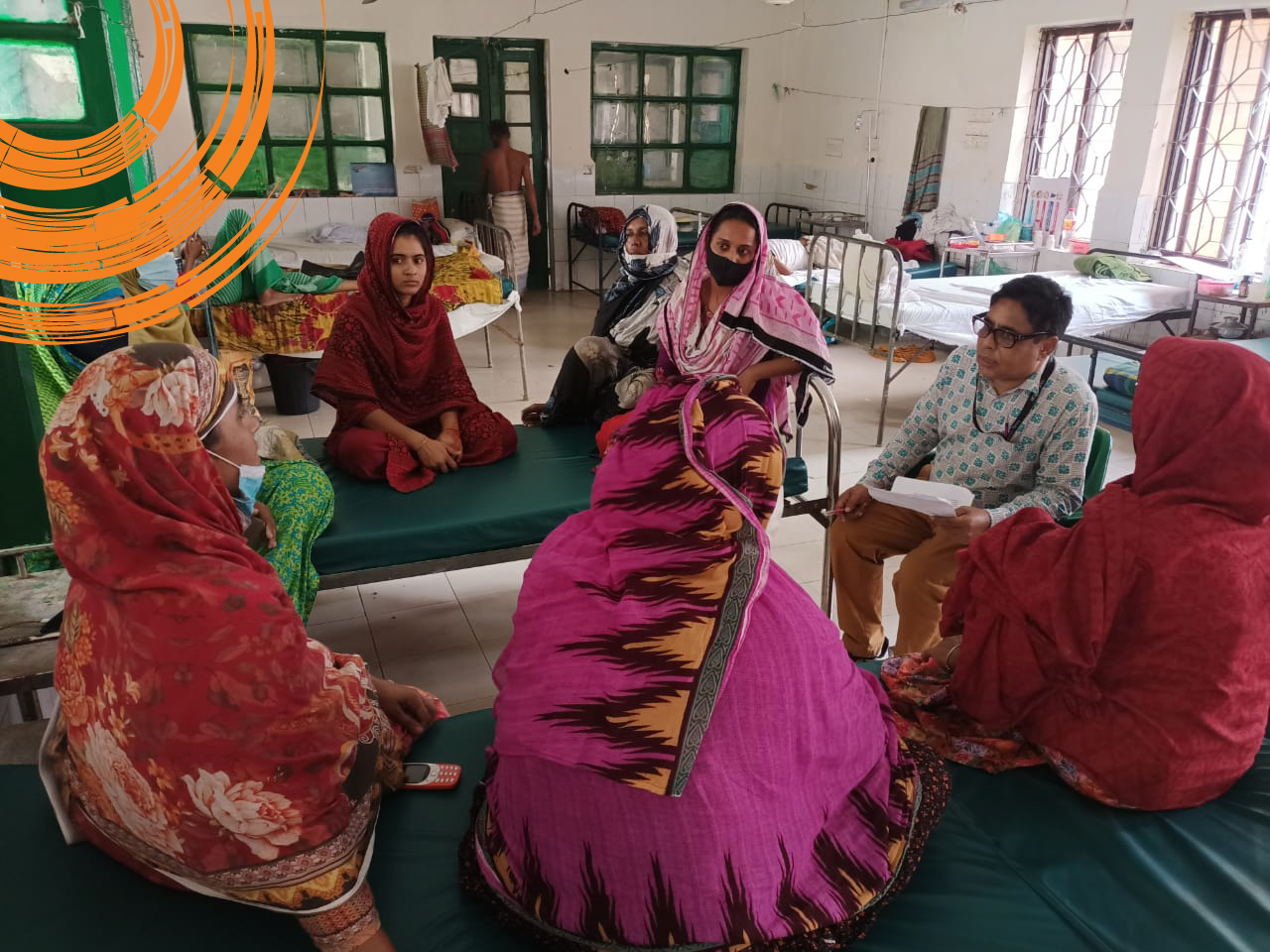
In the global battle against diseases like tuberculosis (TB), establishing a patient-centric healthcare system poses a significant challenge. Despite its complexities, it’s crucial to prioritize patient needs and make data-driven policy decisions to develop healthcare facilities. This article will examine Bangladesh’s efforts to combat TB through a patient-centric lens, emphasizing the importance of understanding patient perspectives, engaging communities, and implementing innovative strategies such as scorecard assessments.
WHO marked TB as the world’s second most prevalent cause of death following COVID-19. Every year, more than ten million people get diagnosed with TB. The story of Bangladesh is no different since Bangladesh comprises 3.6% of the global TB patient. Despite various interventions, the voices of TB patients often go unheard, overshadowed by a predominant focus on provider-centric approaches.
Now a critical question arises: How can we create a patient-focused healthcare system and facilities, especially in countries with limited resources like Bangladesh?
Each country has a unique sociocultural context, which is crucial to comprehend before implementing any kind of intervention. Most often, the obstacles to eradicating diseases typically stem from social and gender norms. A five-year (2021-2025) National Action Plan (NAP) for tuberculosis prevention addresses patient-centric health services; however, it fails to describe how we are going to do it. For example, it only mentioned that the health needs of women and other vulnerable communities needed to be addressed but lacked the necessary interventions. To address this gap, Innovision Consulting conducted a study to gather TB patients’ perspectives on service provision in five tertiary hospitals. The study aimed to empower patients to share their experiences and provide a demand-end evaluation of health facilities.

In collaboration with Institute of Allergy and Clinical Immunology of Bangladesh (IACIB), Innovision Consulting piloted the TB scorecard on Community, Rights, and Gender (CRG) in Bangladesh, marking the first instance of such an assessment in the context of TB. This study explores the scope of understanding communities and their gender dynamics. If we can understand their opinions about the facilities, and subsequent services, we can focus on the specific issues of the facilities that need improvement. Through this approach, issues such as staff behaviour, infrastructure deficiencies, and gender-specific concerns were identified and addressed.
Our study uncovered some useful insights into the TB healthcare system in Bangladesh. For example, TB patients and caregivers were quite happy with the attitude of the doctors compared to the facility staff. During the investigation, we found several facility staff demanding monetary benefits from patients in exchange for service information. We also found that satisfaction with the facility environment differed among the patients of different facilities. We identified that one facility fell short of standards in addressing female hygiene issues. Several women complained about the poor functionality of the attached washrooms in the female TB wards. For instance, there was no light in the washroom. It is important to note that male caregivers were also users of the washroom, and the fear of privacy violation was valid and prevalent there. Additionally, the participants were not sure whether marginalized and vulnerable communities like the Hijra community accessed this health service at all. Moreover, structural barriers hindered women from receiving services.
These findings paved the way for us to suggest pinpoint improvements in the facilities, such as behavioural training for staff, unisex design for amenities, etc. This piloting study helped us generate evidence for resource allocation for specific facilities, keeping the demands of the context in line. Additionally, this scorecard can be useful to engage directly with stakeholders through this specific data as well as address gender needs and requirements for other vulnerable communities. Though it is a pilot in just 5 facilities, the study shed light on several aspects for improvement which required little monetary allocation. If applied to more facilities, we can hope that it will strengthen the government’s decision-making capability more efficiently and patient-centric. Not only for TB but also for other diseases as well, this scorecard assessment can empower the people, and in the end, empower the whole health system.
Building a patient-centric healthcare system in low resource settings like Bangladesh requires an integrated approach that prioritizes patient perspectives, encourages community engagement, and utilizes innovative tools for assessment and improvement. By addressing the specific needs of TB patients and other vulnerable communities, stakeholders can work towards a more equitable and effective healthcare system, ensuring better outcomes for all.
Author: Sadia Siddique Katha an Intern and Syed Hassan Imtiaz a Senior Associate in the Gender and Basic Services Portfolio at Innovision Consulting